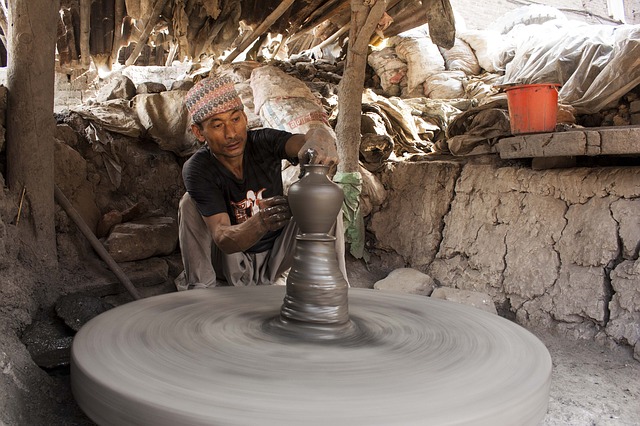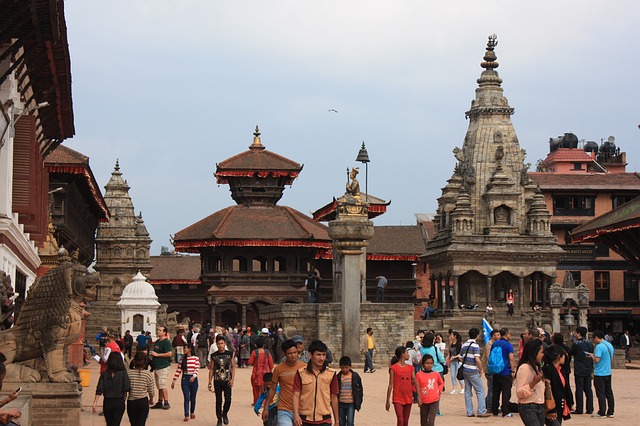
Nagarkot, Dhulikhel and the Nagarjuna Hills are close in to Kathmandu locations for panoramic views of the Hiamalya. The great peaks of Dhaulagiri and Kanchanjunga can be seen from Nagarkot, on a clear day. Sankhu, Thimi and Bungmati are typical Newari villages where one can appreciate the Newar way of living. Gokarna is an old Newari village surrounded on three sides by the Gokarna Wildlife Reserve, one of the untouched forest of the Valley. One can ride an elephant or horse or play golf on an excellent nine-hole course. Also there is a renowned Gokerneshwor Temple, dedicated to lord Shiva, and constructed in 1582.It is well know that Bhaktapur is the third largest city in the Kathmandu valley. This city was once the capital of Nepal during the great Malla Kingdom from the 12th to the 15th century. Bhaktapur is about Four square miles of land situated at an altitude of 1,401 meter from sea-level.It is a home to Traditional art and architecture, pottery and weaving industries, rich local customs and culture, and the every-day life of Bhaktapur people. All that and more will have you visit this untouched ancient city more than once! Nepal's Malla dynasty's achievements in arts and crafts are reflected throughout the Bhaktapur city. Bhaktapur is also known by woodcarving artists, for it's cap known as Bhadgaon Topi, and for it's curd which is almost famous in Nepal. Tourists visiting the city also take the time to relax and observe other interesting happenings in the city such as tourist can know the arts and culture,living style and they can also Paint or sketch the monuments if intrested ,children's playing outside their home and in temple yards, busy and color-full open markets, women's making clay-pots, weaving, and sun-drying crops and vegetable products. Bhaktapur is located at 14 km east of Kathmandu and can be reached by public transport.
Getting to Bhaktapur : From Kathmandu, either take a taxi or a bus or ride a bike. Ride should not cost more than Rs 400 for a taxi or Rs 20 for a public bus that leaves from Bagbazaar Bus Station. Places to visit in BhaktapurBhaktapur Durbar Square : One of the world heritage sites in the country which reflects the city's rich culture, art and architectural design, it is also the central setting of the city for architectural monuments and arts. The golden gate is the entrance to the main countyard of the Palace of 55 windows, the gate is regarded as the world's most beautiful and richly carved specimens of its kind.Knowing the history of Nepalese historic culture Bhairavnath Temple of BhaktapurBuilt as a one-story pagoda during the reign of King Jagat Jyoti Malla, later changed into a three-storey temple in 1718 A.D. by King Bhupatindra Malla, this temple now stands for its artistic grandeur. Bhairavnath temple is dedicated to Lord Bhairav - the god of Terror. Bhaktapur Nyatapol TempleThe temple is about 30 meter tall, and is the tallest temple in the Kathmandu valley. It was built by King Bhupatindra Malla in 1708 AD. Each of its five terrace holds a pair of figures, starting from bottom wrestlers, elephant, lion, griffins and goddesses and all the carving are in fully detailed with finishing touches. The Bhaktapur National Art GalleryIt is Located in the Bhaktapur Durbar Square. Rare paintings, and manuscripts with painted covers and illustrations can be found in this museum. Gallery contains brass, bronze, stone and wooden images, gallery is explored by tourists for medieval art tradition of Nepal. Gallery is closed on Thursday and on public holidays. Dattatraya Temple:Built in 1427 AD, the temple is said to have been built from a single tree. A Monastery having exquisitely detailed carved peacock windows is located near the temple. Some of Bhaktapur's important sightseeing places are as follows: Siddha Pokhari-This is a big rectangular water tank located near the main city gate. It was built during the reign of King Yakshya Malla in the early fifteenth century and is associated with a number of different myths. From this spot a wide range of snowy peaks are visible on clear days. Durbar Square-Bhaktapur Durbar Square is a conglomeration of pagoda and shikhara-style temples grouped around a fifty-five window palace of brick and wood. The square is one of the most charming architectural showpieces of the Valley as it highlights the ancient arts of Nepal. The golden effigies of the kings perched on the top of stone monoliths, the guardian deities looking out from their sanctuaries, the wood carvings in every place - struts, lintels, uprights, tympanums, gateways and windows all seem to form a well-orchestrated symphony. The main items of interest in the Durbar Square are: (a) The Lion Gate-Dating as far back as 1696 A.D., this gate is guarded on either side by two huge statues of lions. Alongside there are two stone images of Bhairab (the dreadful aspect of Shiva) and ugrachandi (the consort of Shiva in her fearful manifestation). (b) The Golden Gate-The Golden Gate is said to be the most beautiful and richly moulded specimen of its kind in the entire world. The door is surmounted by a figure of the goddess Kali and Garuda (mythical man-bird) and attended by two heavenly nymphs. It is also embellished with monsters and other mythical creatures of marvellous intricacy. In the words of Percy Brown, an eminent English art critic and historian, the Golden Gate is 'the most lovely piece of art in the whole Kingdom; it is placed like a jewel, flashing innumerable facets in the handsome setting of its surroundings'. The gate was erected by King Ranjit Malla and is the entrance to the main courtyard of the palace of fifty-five windows. (c) The Palace of Fifty-five Windows-This magnificent Palace was built during the reign of King Yaksha Malla in 1427 A.D., and was subsequently remodelled by King Bhupatindra Malla in the seventeenth century. Among the brick walls, with their gracious setting and sculptural design, is a balcony of fifty-five windows, considered to be a unique masterpiece of woodcarving. (d) The Picture Gallery-The Picture Gallery is of considerable value which contains ancient paintings belonging to the Hindu and Buddhist Tantrism of various periods and descriptions. This gallery is open everyday except Tuesday. (e) The Statue of King Bhupatindra Malla-This statue showing King Bhupatindra Maila in the act of worship, can be seen placed on a column facing the palace. Of the square's many statues, this is considered to be the most magnificent. (f) Batsala Temple-The stone temple of Batsala Devi depicts many intricate carvings; however, it is most famous for its bronze bell, known to local residents as 'the bell-of barking dogs', as when it is rung, all dogs in the vicinity begin barking and howling! The colossal bell was hung by King Ranjit Malla in 1737 A.D. and was used to sound the daily curfew. It is nowadays rung every morning when goddess Taleju is worshipped. (g) The Pashupati Temple-This temple is a replica of the famous temple by the Bagmati river in Kathmandu and is widely noted for the erotic carvings on its struts. 11 was built by King Yakshya Malla. Nyatapola Temple-This five-storeyed pagoda was built by King Bhupatindra Malla in 1702 A.D. It stands on five terraces, on each of which squat a pair of figures: two famous wrestlers, two elephants, two lions, two griffins, and Baghini and Singhini - the tiger and the lion goddesses. Each pair of figures is considered ten times stronger than the ones immediately below, while the lowest pair, the two strong men Jaya Malla and Phatta Malla, were reputedly ten times stronger than any other men. This is one of the tallest pagoda-style temples in Kathmandu Valley and is famous for its massive structure and subtle workmanship. Just beside temple is a monastery (Math) with exquisitely carved peacock windows. These famous windows were also carved during the reign of King Vishwa Malla. The monastery is full of artistic facades of latticed windows and engraved columns. Bhairab Nath Temple-This is another pagoda temple of lord Bhairab, the dreadful aspect of Shiva. It stands a short distance away from the temple of Nyatapola and was originally constructed by King Jagat Jyoti Malla on a modest scale. It was later remodelled by King Bhupatindra Malla, a zealous lover of the arts, into what it is now a three-storeyed temple. Dattatraya Temple-The temple of Dattatraya is as old as the Palace of fifty-five windows. Consecrated by King Yakshya Malla in 1427 A.D., this temple, according to popular belief, was built out of the trunk of a single tree. It was subsequently repaired and renovated by King Vishwa Malla in 1458 A.D. There is much more to the Kathmandu Valley than its museum-like cities. All over the Valley, there are beautiful and interesting towns, each with its own history and legends, shrines and stupas. Most of these smaller towns and villages can be approached by car or bus while others require a good walk or cycle ride. There are also several scenic spots on the edge of the Valley that command dramatic views of the great Himalayan peaks. In fact, the Kathmandu Valley is ideal for a short visit and a mini trek.









